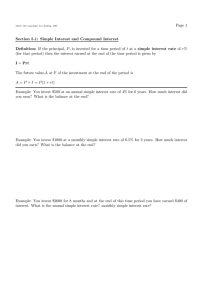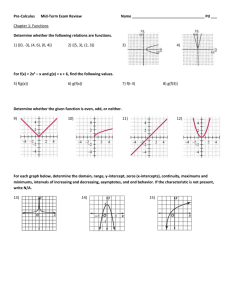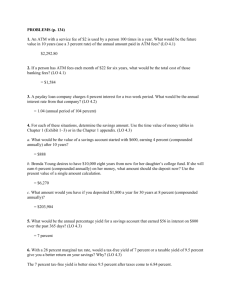4.1 Exponential Functions and Compound Interest
advertisement
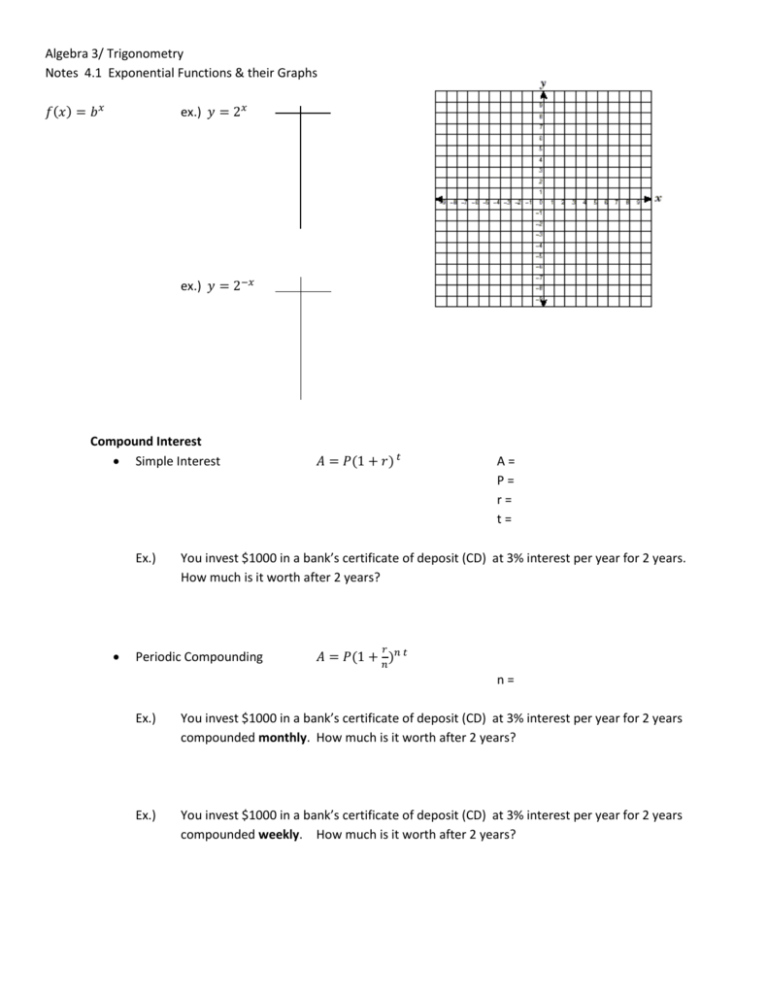
Algebra 3/ Trigonometry Notes 4.1 Exponential Functions & their Graphs 𝑓(𝑥) = 𝑏 𝑥 ex.) 𝑦 = 2𝑥 ex.) 𝑦 = 2−𝑥 Compound Interest Simple Interest Ex.) 𝐴 = 𝑃(1 + 𝑟) 𝑡 A= P= r= t= You invest $1000 in a bank’s certificate of deposit (CD) at 3% interest per year for 2 years. How much is it worth after 2 years? Periodic Compounding 𝑟 𝐴 = 𝑃(1 + 𝑛)𝑛 𝑡 n= Ex.) You invest $1000 in a bank’s certificate of deposit (CD) at 3% interest per year for 2 years compounded monthly. How much is it worth after 2 years? Ex.) You invest $1000 in a bank’s certificate of deposit (CD) at 3% interest per year for 2 years compounded weekly. How much is it worth after 2 years? Continuous Compounding 𝐴 = 𝑃𝑒 𝑟 𝑡 As you can see, the computed value keeps getting larger and larger, the more often you compound. But the growth is slowing down; as the number of compoundings increases, the computed value appears to be approaching some fixed value. You might think that the value of the compound-interest formula is getting closer and closer to a number that starts out "2.71828". And you'd be right; the number we're approaching is called "e". This is known as Euler’s number or the “natural” exponential. Ex.) You invest $1000 in a bank’s certificate of deposit (CD) at 3% interest per year for 2 years compounded continuously. How much is it worth after 2 years?
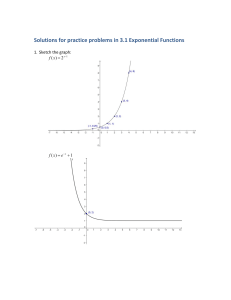

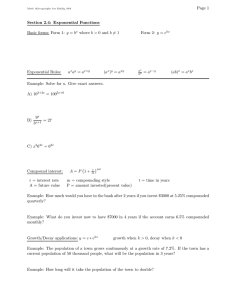
![Practice Quiz Compound Interest [with answers]](http://s3.studylib.net/store/data/008331665_1-e5f9ad7c540d78db3115f167e25be91a-300x300.png)


